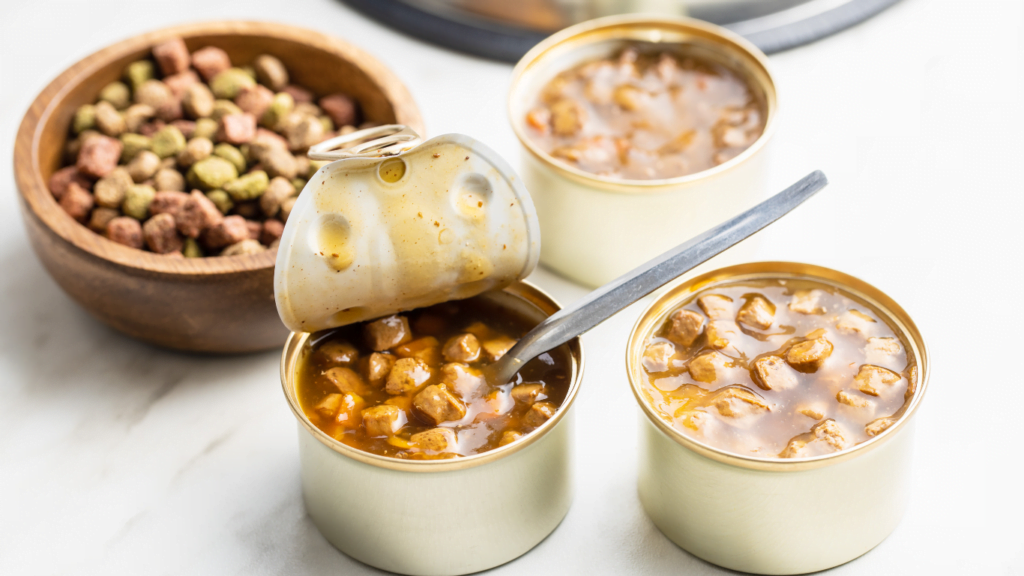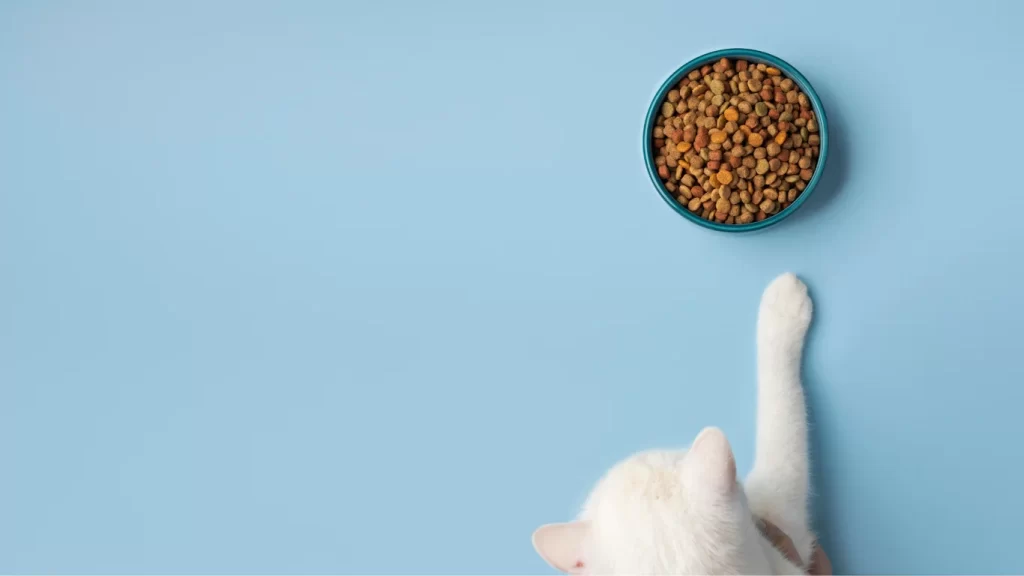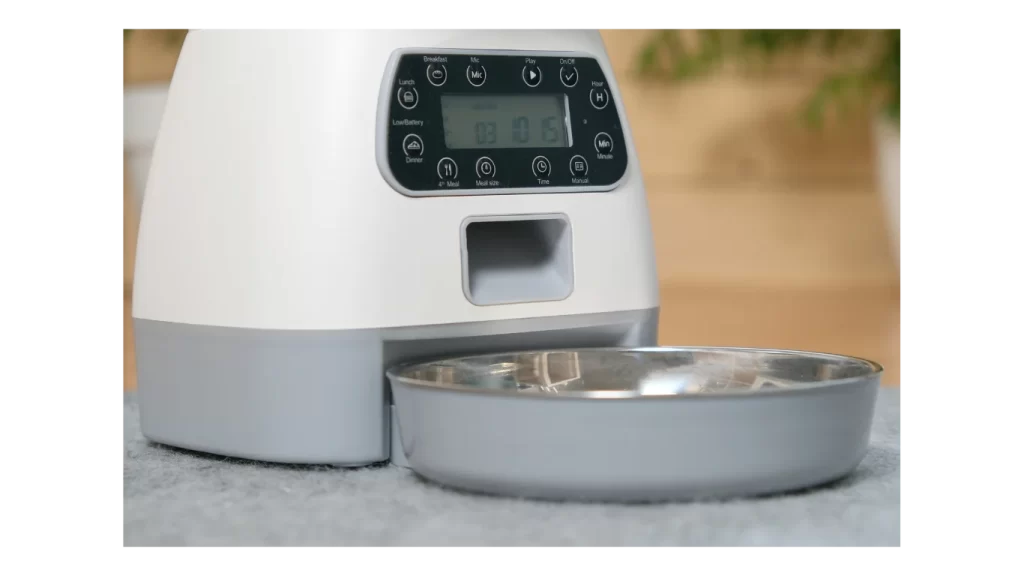Understanding what to feed your cat is sometimes a big challenge for pet owners who want to ensure their cats stay healthy and happy. With the multitude of choices and conflicting information available, understanding cat food labels and distinguishing the best cat food from the rest is vital. The Cat Nutrition Guide is an essential resource that sheds light on the specific dietary needs of cats, helping owners make informed choices about their pets’ nutrition. At the heart of a healthy diet for cats lies a clear comprehension of feline nutrition, the debunking of prevalent cat nutrition myths, and the adoption of a balanced diet that meets all their nutritional requirements.
Together we’ll go over nutrients that are crucial for your cat’s well-being, offering a detailed Cat Nutrition 2024 Guide that covers everything from homemade cat food to understanding the intricacies of commercial food options. We will explore feeding tips tailored to different life stages, ensuring your cat receives the optimum nutrition whether they are a playful kitten or a serene senior.
Additionally, healthy feeding practices, special dietary considerations, and establishing a consistent cat feeding schedule are discussed, all aimed at fostering a well-rounded approach to feline care. Whether you’re deciphering cat nutrition advice for the first time or are looking to refine your existing knowledge, this guide is poised to be an invaluable tool in the pursuit of a balanced diet for cats, equipping you with the knowledge to navigate the landscape of cat nutrition with confidence.
Essential Nutrients for Cats

Cats feed on a balanced diet rich in proteins, fats, carbs, vitamins, and minerals to maintain health. Understanding these essential nutrients can help cat owners ensure their pets receive the necessary dietary components.
Proteins and Amino Acids
Cats are obligate carnivores, meaning their diet must predominantly consist of meat. Proteins are vital for growth, tissue repair, and overall health. Amino acids, are crucial, and cats particularly need taurine and arginine, which are not synthesized sufficiently in their bodies. Sources like animal-sourced foodstuffs provide these essential amino acids and support optimal feline health.
Fats
Fats give you more energy per gram than proteins or carbohydrates. They help your body absorb critical vitamins A, D, E, and K. Fats also provide fatty acids like Omega-3 and Omega-6, which are used for keeping your cell membranes healthy and supporting skin health. Common sources include fish oil, which is rich in EPA and DHA, known for their anti-inflammatory properties.
Carbohydrates
While not essential in a cat’s diet, carbohydrates provide a quick energy source. Cats have a limited ability to digest starches, and their diet should not be high in carbohydrates as it may lead to obesity or diabetes. Ideally, carbohydrates in cat food should be well-cooked to enhance digestibility and should be present in moderate amounts to avoid adverse health effects.
Vitamins and Minerals
Cats need various vitamins and minerals in appropriate amounts to support bodily functions. Fat-soluble vitamins like A and D are crucial for vision and bone health but can be toxic in high doses. Water-soluble vitamins such as B and C support blood cell formation and immune health. Minerals should be balanced to support metabolic processes without overloading the cat’s system.
By providing a diet rich in these nutrients, cat owners can ensure their pets lead healthy, active lives.
10 Puppy Training Secrets Experts Don’t Want You to Know! Transform Your New Pet Today
Feeding Tips for Different Life Stages

Kittens
Young kittens have small stomachs and benefit from being fed four small meals a day. If this isn’t feasible, leaving out some dry food for nibbling is advisable. By 4 months old, kittens can transition to three meals daily, and by 6 months, two meals per day are sufficient. It’s important to feed them in a quiet area where they can observe their surroundings, as this helps them feel secure and keeps mealtimes stress-free.
Adult Cats
Adult kitties should be fed at least twice a day since they naturally prefer to eat small meals frequently..Changing their diet should be a gradual process over at least a week to avoid digestive upset. Start with a small amount of the new diet mixed with the old, gradually increasing the new food portion.
Senior Cats
As cats age, their dietary needs change. Senior cats often require diets lower in calories but rich in high-quality protein to maintain muscle mass. They may benefit from smaller, more frequent meals and diets that include functional foods like Omega-3 fatty acids to support deteriorating joint health and cognitive function. Ensuring food is at room temperature can enhance their appetite, and regular vet check-ups are needed to follow their health and adjust their diet as needed.
Healthy Feeding Practices
Establishing a structured feeding regimen is crucial for maintaining your cat’s health and well-being. Here are three effective feeding methods to consider:
Portion-Control Feeding

This method involves measuring the exact amount of food your cat requires for each meal and offering it at specific times throughout the day. Portion control is beneficial for monitoring food intake, which is particularly important for cats with dietary restrictions or those prone to obesity. It also helps prevent overeating and can reduce the risk of food-related aggression in multi-cat households.
Free-Choice Feeding
Free-choice, or ad libitum feeding, allows cats to access food at any time of the day. This method is suitable for cats who self-regulate their food intake well. However, it requires careful monitoring to prevent overeating. Only dry foods should be used, Dry foods last longer than wet foods because they don’t spoil as quickly..
Timed Feeding
Timed feeding schedules involve providing food at set times for a limited duration, typically 20-30 minutes. This approach helps regulate your cat’s eating habits and ensures they receive the right amount of food. It’s especially useful in households with multiple pets, allowing each cat to eat without competition.
Each feeding method has its advantages, and the choice depends on your cat’s health, eating behaviour, and your daily schedule. Regular check-ins with a vet can help figure out the best way to feed your cat based on their specific needs.
Special Dietary Considerations
Dealing with food allergies in cats requires identifying and eliminating allergens from their diet. Common culprits include beef, dairy, and fish. Once an allergy is suspected, a veterinarian might recommend a special elimination diet, where the cat is fed food with limited ingredients until allergens are identified.
Raw diets for cats are becoming increasingly popular, believed to mimic a natural feline diet. However, they must be prepared with care to avoid bacterial contamination and ensure nutritional completeness. Consulting with a vet before transitioning to a raw diet is crucial.
Weight management is essential for maintaining a cat’s health, as obesity can cause serious health issues like diabetes and joint problems. Portion control and regular physical activity are needed. For overweight cats, a gradual diet plan designed by a veterinarian can ensure safe and effective weight management.
Summing Up Our Cat Nutrition Guide
Through the comprehensive exploration of feline nutrition outlined in this guide, it’s clear that understanding and catering to the dietary needs of cats is fundamental for their health and wellbeing. From the importance of proteins and amino acids for obligate carnivores, to the nuances of feeding practices across different life stages, the guide has diligently covered the essential aspects of a balanced diet, debunking myths and highlighting the significance of informed nutritional choices. Precise focus on the specific nutrients, alongside practical feeding tips, equips cat owners with the necessary insights to foster a healthy lifestyle for their feline companions, ensuring they lead active, happy lives.





